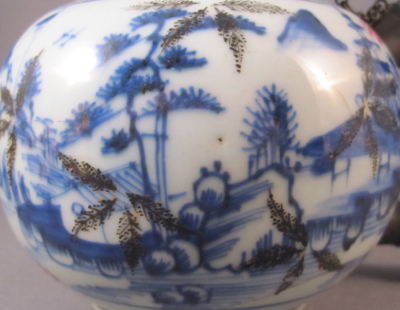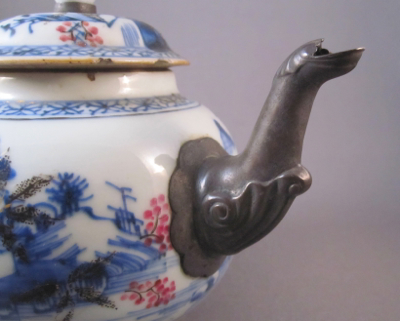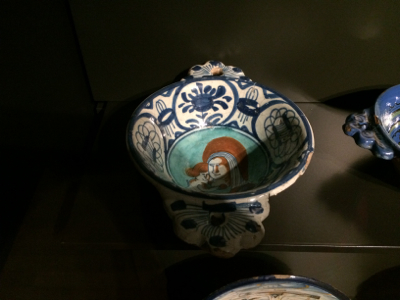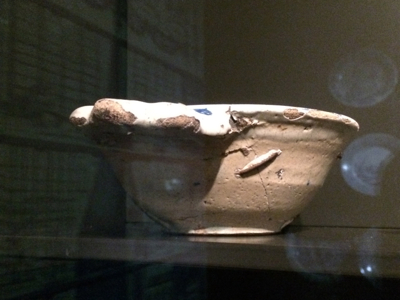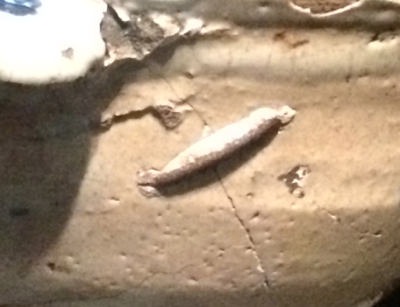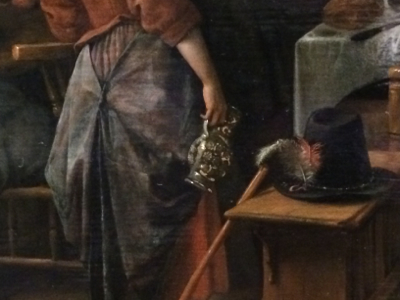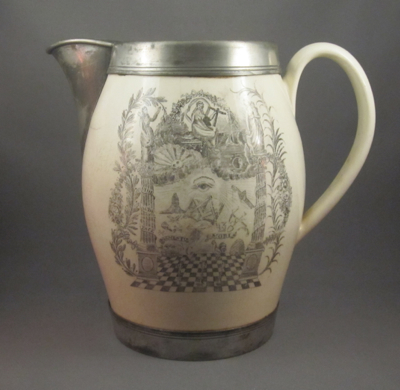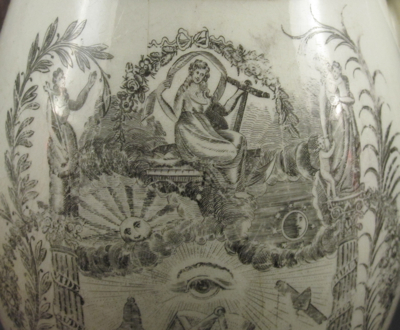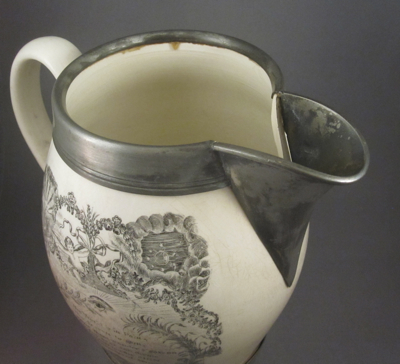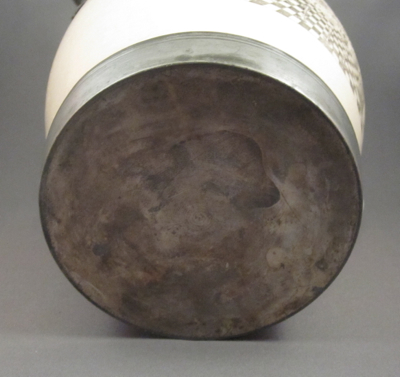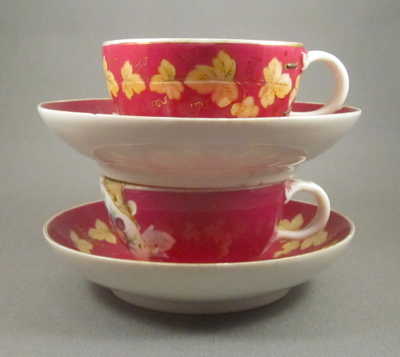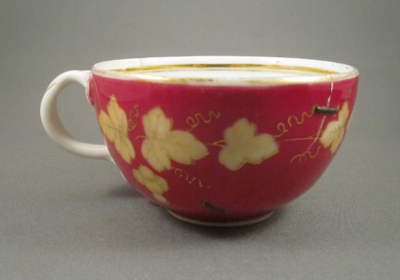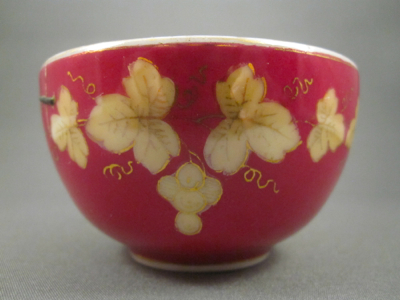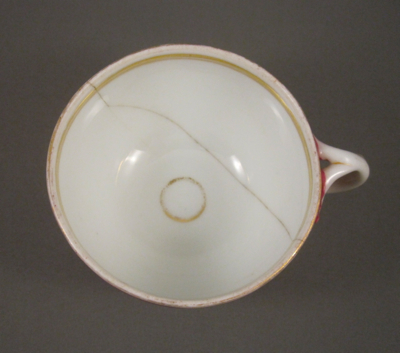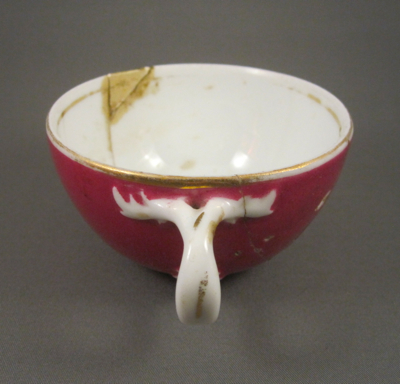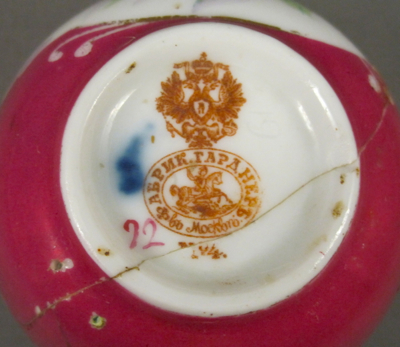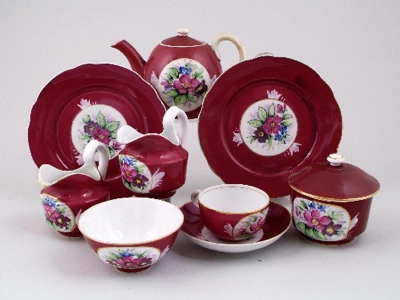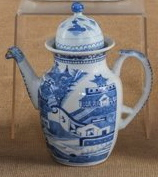This Teniers shape footed porcelain jug was made in Burslem, Staffordshire, England by Royal Doulton, 1892-1902. The bold transfer decoration in the Galleon pattern is printed in black with hand painted washes of mustard and aqua. This popular nautical scene appears on other forms, including vases and tobacco jars, and is clearly stamped in black on the underside DOULTON, BURSLEM, ENGLAND, GALLEON. Jug measures 7 inches high and 7 inches wide.
After this heavy jug slipped through the hands of an earlier owner, breaking its handle into four pieces, it was taken to a tinker (or china mender) who reattached the sections using five wide metal cuffs. Rather than leave the unfinished metal repairs to detract from the allure of the jug, the bands were painted in enamels to match the color and decoration of the handle. Although the color on the repairs has mellowed with age, the result still holds up and continues to be effective.
The Dalton Lambeth Galleon jug shown here has a different coloration and a perfect handle.
Photo courtesy of eBay









